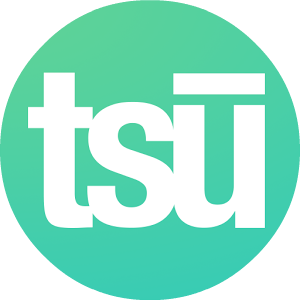Writing a great product description can mean the difference between making a sale and not. Having worked hard to get your visitor to the product page, spent money on SEO and glossy photos and driven the price down to something unbeatable, you still need to close the deal with an irresistible description. It should be easy to read and answer all your customers’ questions, convincing them that their life just won’t be as amazing as it could be without this product. So here goes…
Layout
Before getting into the words themselves, its best to think about how you want to lay out your description. Ideally you will have as many good quality pictures of your product as possible, as this will be the first thing a customer looks at once the page has loaded. Right alongside those pictures you need:
- A great headline.
- To use a few short paragraphs – but enough that you are able to get your sales message across successfully.
- To replace paragraphs with bullet points where possible. People like bullet points because you can skim them easily.
NB: Online, people tend not to read things in full. They will instead skim through looking for sections that jump out at them. You can assist them by using bullet points, short paragraphs and by hyper linking or bolding certain keywords that will draw them into the paragraph.
You must keep all your major sales copy ‘above the fold’ of the page so that people don’t have to scroll down to read anything crucial. You can use the space below the scroll of your page for additional information (more on this later).
It would be of great benefit to also include on the first page (above the scroll):
- Links to similar products on your site.
- Social media links and comments boxes.
- A clear indication of where the checkout is.
- A link back to your product search page or a search box on the same screen.
The Words
Now that you have nailed your layout so that people will find it inviting and easy to read, you are ready to start filling your description page with words. The best way to set your mind before writing a product description is to imagine yourself as a customer. Read some product descriptions on other websites and think about why some make you want to buy a product while others don’t. One of the most important aspects of a product description is that it must involve the reader. Customers need to feel that the product is for them and any way you can work to allow them to imagine themselves using, eating, wearing or even just basking in the glory of owning a product, the better!
Killer Headline
You can start focusing on your customer by dealing them a punchy, attractive and enticing headline right from the off. This should grab their attention immediately and encompass your entire description in one sentence. You can do this by focusing on your USP (more on this later) or create a mystery by asking a question – people are naturally intrigued by mysteries. Promising some unique information can also work well.
Basically, any headline that is going to make a reader want to see what the body copy says is perfect.
Focus on YOU
Or focus on THEM, more accurately. It’s all very well writing about a product and how great it is, but if you don’t involve the reader in the description they won’t feel emotionally invested in the product, and it is the emotional part of the brain that makes those sorts of decision. So for example, instead of saying:
“This perfume is the same as celebrities wear to events like the Oscars.”
You would say:
“You will feel like Beyoncé striding down the red carpet, absorbed in your glamorous fragrance with camera flash bulbs sparkling in your eyes.”
By simply orientating your descriptions towards your reader, you will make a much bigger impact on their mind.
Sell Benefits Not Features
When describing a product it is important to remember that it isn’t the features of the product that people are investing in, it is the benefits they will receive through owning this product. People don’t buy something like a car for the sake of having a hunk of metal with wing mirrors and a horn; they buy a product because of what it can do for them – its benefits. So instead of listing a particular car’s technical specifications, you want to list its real benefits:
- It will make you look cool
- It will save you money on petrol
- It will keep your children safe
- It won’t harm the environment too much
These benefits can be backed up with more technical proof but you should remember to focus on the benefits throughout your product description.
USP
This brings us on to the most important benefit of all: the unique benefit, or unique selling point (USP). Your USP is the one thing about your product that makes it stand out and be better than all the rest. It is the thing that will make anyone stop and go ‘oooh’ and it is the one core driving principle behind any successful product. To discover your product’s USP you need to remember to think like a customer and ask: What is it about this product that makes me most want to buy it? If you’re stuck, do a poll, or check out your competition that are selling a similar product and ask yourself – what it is that your product has that theirs doesn’t offer? It could be:
- Cheaper
- More authentic
- Be from a more ecological source
- Endorsed by a celebrity
If you just can’t find a unique benefit you may need to either draw more attention to your other benefits, or create one yourself by perhaps offering a discount or free delivery. These promotions could give your product a unique slant that will capture your reader’s attention.
Emotionalise Your Customer
Now that you are focusing on your customer and you have sold them all the benefits and highlighted your unique selling point, it’s time to create a picture in their minds which will draw them into the world of the benefits of the product and sell the experience they are so close to holding in their hands.
The best way to do this is to think about an image or a place and time in which someone could get the most emotional response from using your product. Then through your words, place your customer in that situation using your product. Make your customer smell, taste, feel, hear your product and have them experiencing the benefits. Use emotional words, tantalising words and creative adjectives – always building the emotion of the experience that could be had by just taking the simple step of making the purchase.
Easy Language
Make sure that the language you use isn’t alienating your potential customers. You should use short crisp sentences throughout and avoid overly complicated words which may put some people off. Break down any intricacies with short sentences and use language that you would use if you were describing a product to a friend.
Be Honest
Not that you haven’t been honest so far, but by proving to your potential customer that your other existing customers agree with what you are saying, you break down a major barrier holding back a customer’s decision to make a purchase: Trust. Testimonials make your products sound even more credible and if you can show someone benefitting either through a quote or even a photo or video, the more powerful the effect will be on your prospective customer.
SEO
It may feel extremely tempting here to stuff keywords into your description in order to seduce the search engines into ranking your page higher. While in reality what you write should naturally fill up with tasty keyphrases by itself and by using words that don’t naturally fit into the sentences you can inadvertently put off your readers with bad grammar and weird Frankenstein sentences. If you do this you can undo all the hard work you have done getting your visitor this far.
Call to Action
Nail in the coffin time. Your customer has come to the end of your product description and they are pretty much convinced, but they now need that final nudge to head to the checkout. What you need now is what’s called a “Call to Action”. This is a chance for you to tell your customer what to do directly. The best place for this killer phrase is on a button which leads them to the checkout or right at the end of your main product description so it’s the first thing they see after reading it. You can also use this as a moment to remind your reader of your USP. Here are some examples of call to actions:
- Click Here to Buy Your T-shirt with Free Shipping
- Enter your Email Address to Grab Yourself a 50% off Voucher
- Hit Go! To Start Living Like A King Today
This final shove and reminder of what they are gaining is the crucial final step in your effective product description.
Additional Information
Below the fold on your product description page you can use the space to include the following:
- Further testimonials
- Social networking comments
- Serving suggestions/outfit combination ideas/accessory options
- History surrounding the product
- Current/future events relating to your product.
Basically, you should use this space to bulk up the content of your product description page further. Provide any additional information you can about your product to help your visitor get to know it and emotionally invest in it further. Testimonials improve their trust in your product, accessory ideas allow them to imagine themselves using your product and the history helps you naturally provide good keyphrase rich content to help your pages relevance for this product.
Beyond the Basket
Don’t rest just yet; on the checkout page you can include further information to seal the deal completely. By using this page to again remind visitors of the benefits of the USP and anything extra you want to offer (e.g. money back guarantee).
Proof Read Thoroughly
Last of all, have someone proof read the product description who isn’t the writer themselves. It is important not to put your customer off with any careless spelling mistakes or grammatical errors.
(Can you spot the deliberate errors in this document?!)
And you’re done. Congratulations!
- Search The Human Body With Google Body Browser - December 21, 2010
- Has This Site Been Hacked? - December 20, 2010
- How Do Twitter & Facebook’s 2010 Trends Compare With Google’s? - December 14, 2010
- Google Zeitgeist 2010: What Have You Been Searching For Planet Earth? - December 10, 2010
- Google Chrome Gets Store And Talks Chrome OS - December 8, 2010
- Google Issues Security Email For Website Optimiser - December 7, 2010
- Google Launches AdWords Global Market Finder - December 7, 2010
- New Android Phone Promises A Pure Experience - December 7, 2010
- Google AdWords Wants Your Products! - December 3, 2010
- Know How Mobile Internet Affects Your Website? Google Analytics does… - December 2, 2010
You may also be interested in:
- Unique Product Descriptions Revisited Yes I know we have mentioned this problem on the blog a couple of times now, however this new Webmasters...
- Should I Use Product Descriptions From My Suppliers Website? When it comes to writing your product descriptions you could be unknowingly making your website invisible to the search engines....
- Google AdWords Roll Out Product Extensions Across the USA Over the last few months you may have noticed that Google has been testing a new form of expandable advert...
- Creating an Effective Social Media Strategy for Your Business A good social media strategy can be a valuable asset to your business. A strong social media presence is a...
- 4 Ways to Dominate Using Content Marketing in E-Commerce Whether you are selling home-made crafts, t-shirts any other consumer product online, you have most likely heard it said that...





